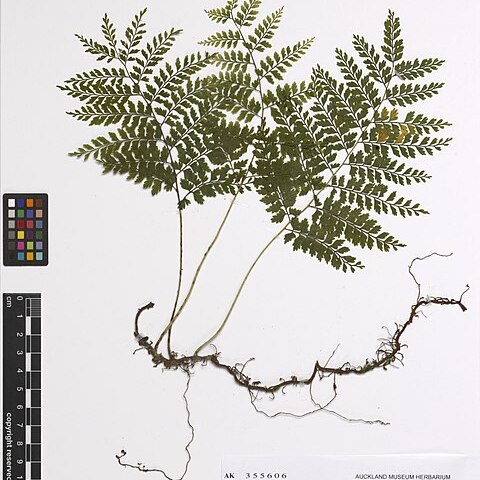Plants initially terrestrial, climbing up tree trunks. Rhizome long creeping, stout, dorsiventrally compressed, bearing roots ventrally and 2 rows of fronds, often spiny; apex and frond primordia densely scaly; scales brown, peltate, deciduous. Fronds widely spaced, dimorphic with contrasting juvenile and adult sterile fronds; stipe stramineous, terete, base swollen and ± articulate; sterile lamina 1(or 2)-pinnate, juvenile fronds oblong-lanceolate to ovate-triangular in outline, papery; juvenile and lower fronds (bathyphylls) adpressed to substrate, pinnae lobed to pinnatifid; mature upper fronds (acrophylls) held away from substrate, pinnae lanceolate, all pinnae or pinnules articulate to rachis; costae and sometimes veins with small lanceolate or stellate scales; margins entire or serrate; veins free, reaching or nearly reaching margin; costae not grooved adaxially, sparsely scaly, scales lanceolate or stellate. Fertile pinnae linear to linear lanceolate, veins anastomosing but not normally visible. Sporangia acrostichoid; small stalked scales among sporangia. Spores ellipsoid to globose, echinate, reticulate or with short folds.
Rhizome creeping or climbing, scaly at the apex; scales peltately attached. Fronds 1-or 2-pinnate, markedly dimorphic. Serile fronds of 2 types; juvenile fronds on young growth (bathyphylls) with small asymmetrical lobed pinnae; mature fronds (acrophylls) with longer nearly symmetrical entire pinnae. Stipe swollen at the base and imperfectly articulated to the rhizome; stalks of lateral pinnae and terminal pinna articulated on the rachis. Fertile lamina with narrow linear pinnae (except in 1 non-Australian species); veins free, simple or forked. Sporangia covering most of the ventral surface of the fertile pinnae. Spores bilateral, with a folded perispore.

